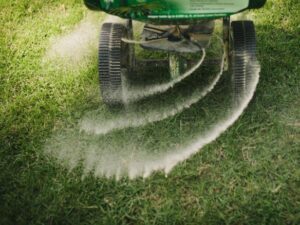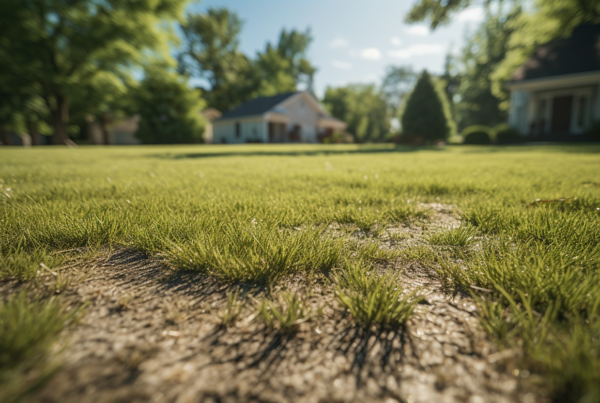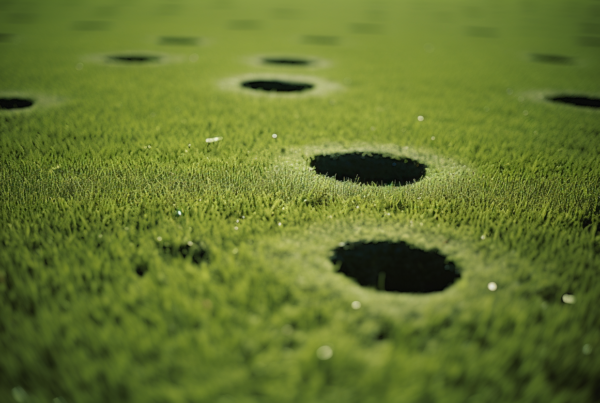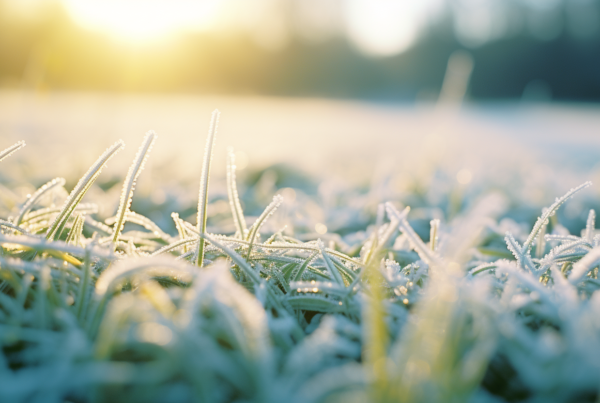To many, a lawn is more than just a patch of green outside their homes; it’s a testament to their dedication to care, aesthetics, and nature. One essential aspect of this care revolves around fertilization, more specifically, seasonal lawn fertilization.
Understanding Seasonal Lawn Fertilization
Unlike general fertilization, seasonal lawn fertilization tailors nutrient delivery to the specific needs of a lawn at different times of the year. Different seasons can deplete various nutrients from the soil, and seasonal fertilization ensures these are adequately replaced. This approach necessitates the use of different types of fertilizers designed for particular seasonal requirements. Remember, when it comes to lawn health, timing is everything.

Fertilizers play a crucial role in maintaining the health, color, and vitality of a lawn. Based on their composition and release mechanism, they can be categorized into various types. Each type, given its unique characteristics, is suitable for specific seasons.
Types of Fertilizer:
- Granular Fertilizers:
- Description: These are solid granules, and their nutrients are released into the soil as they break down.
- Best For: They’re versatile and can be used in various seasons, depending on the type (slow-release or fast-release).
- Liquid Fertilizers:
- Description: They’re applied using a sprayer and are quickly absorbed by plants.
- Best For: Ideal for a quick nutrient boost. They can be used in early spring or whenever a rapid green-up is desired.
- Slow-Release Fertilizers:
- Description: They release nutrients over an extended period, reducing the risk of nutrient burn and lessening the frequency of application.
- Best For: Suitable for early spring and summer as they provide steady nutrition during the growth periods.
- Fast-Release Fertilizers:
- Description: They provide immediate nutrition, but their effect doesn’t last as long, requiring more frequent applications.
- Best For: Useful for repairing damage or quick green-up, especially in early spring or fall.
- Organic Fertilizers:
- Description: Derived from plant and animal residues, they improve soil structure and stimulate beneficial microbial activity.
- Best For: They can be applied in any season but are especially good during the spring and fall when microbial activity is highest.
- Synthetic Fertilizers:
- Description: Chemically processed to provide essential nutrients to plants. They act faster than organic options but can increase the risk of nutrient burn if overapplied.
- Best For: Their application is season-dependent based on the specific needs of the lawn.
Seasonal Lawn Fertilization Recommendations:
- Spring: This is the growth phase for most grass types. Slow-release granular or organic fertilizers are suitable as they provide a steady supply of nutrients. If the lawn looks yellowish or weak, a fast-release type can give it an early boost.
- Summer: Warm-season grasses thrive now, while cool-season grasses can struggle with heat and drought. Slow-release or organic fertilizers, which don’t stress the grass, are ideal. Avoid fast-release types that might burn the lawn in high temperatures.
- Fall: This is the preparation time for winter. Cool-season grasses benefit from a boost in nutrients. Both fast and slow-release fertilizers can be beneficial, depending on the lawn’s health. It’s also an excellent time for organic fertilizers that enrich the soil.
- Winter: In regions with a cold winter, grasses go dormant. Fertilization isn’t generally needed. However, in milder climates where grasses remain somewhat active, a light application of a balanced fertilizer can be beneficial.
Ultimately, the best type of fertilizer and the right season to apply depends on the specific grass type, local climate, and the soil’s current nutrient levels.
Key Benefits of Seasonal Lawn Fertilization
The benefits of this method are manifold. For starters, it provides a nutrient boost tailored to the unique needs of each season. This ensures that the grass has the strength to withstand pests, diseases, and any stresses the weather might bring, leading to improved resistance. Furthermore, by catering to the specific growth phase of the grass, seasonal fertilization promotes enhanced growth and richer color.
Importance of Using Organic Products
While fertilizing is crucial, the type of products you use plays an equally important role. Organic fertilizers, being eco-friendly, ensure that while your lawn thrives, the environment isn’t compromised. They are safe, devoid of harmful chemicals, and in line with sustainable practices. At Managed By Walker, we firmly believe in this eco-friendly approach and are committed to using and promoting organic products.
15 Tips for Effective Seasonal Lawn Fertilization
To make the most of your fertilization efforts, always follow the manufacturer’s instructions diligently. Post-fertilization, ensure you water your lawn adequately to help the soil absorb the nutrients. And remember, while fertilizing is beneficial, over-fertilizing can be detrimental. Moderation is key to effective seasonal lawn fertilization.
To further optimize your lawn’s health and vibrancy, let’s delve into a comprehensive list of best practices for seasonal fertilization.
- Understand Your Soil: Before starting any fertilization, have a soil test done. This will provide information on pH levels and nutrient deficiencies, ensuring you use the right type of fertilizer.
- Follow Manufacturer’s Instructions: Always adhere to the guidelines provided on the fertilizer packaging to avoid over or under-fertilizing.
- Time it Right: Fertilize early in the morning or late in the afternoon to prevent the sun from burning the grass with the fertilizer.
- Water First: Slightly moisten the lawn before applying granular fertilizers. This helps the granules adhere to the grass and get absorbed more effectively.
- Use a Broadcast Spreader: For even distribution of the fertilizer, use a broadcast spreader. It ensures the product is spread uniformly over large areas.
- Avoid Peak Summer: Fertilizing during the peak of summer can stress the grass. Opt for early summer or late spring for warm-season grasses and fall for cool-season grasses.
- Moderation is Key: Over-fertilizing can burn your lawn and harm its health. It’s often better to err on the side of less than more.
- Rotate Types: Consider rotating slow-release and fast-release fertilizers. Slow-release variants provide long-term nutrient supply, while fast-release gives a quick nutrient boost.
- Mind the Weather: Avoid fertilizing before a heavy rainstorm, as it might wash away the fertilizer. Instead, a light drizzle or moderate rain post-fertilization can be beneficial.
- Keep Off the Driveway: Ensure fertilizer granules don’t spill onto driveways or sidewalks. They can wash off into storm drains, affecting local waterways.
- Opt for Organic: Organic fertilizers release nutrients slowly, improving soil health and reducing the risk of nutrient burn.
- Supplement with Compost: Mixing a bit of compost with your fertilizer can provide an added boost of organic material, improving soil structure.
- Avoid Weed & Feed: While convenient, “weed & feed” products (which combine fertilizer and herbicide) may not always be the best choice. The optimal time to fertilize and the best time to control weeds can differ.
- Safety First: If you have pets or children, ensure the fertilizer you choose is safe for them. After application, keep them off the lawn for the duration recommended on the product label.
- Store Properly: Keep unused fertilizer in a cool, dry place, sealed in its original container. Proper storage ensures the product remains effective and prevents accidental spills or ingestion.
Following these tips can help homeowners achieve a lush, healthy lawn throughout the changing seasons.
Conclusion
A thriving lawn is the culmination of various efforts, with seasonal lawn fertilization being a cornerstone. Embrace this practice to witness a visible difference in your lawn’s health and aesthetics. For those aiming for perfection, expert advice can make all the difference. Contact “Managed By Walker” today and get a comprehensive quote to elevate your lawn to its pinnacle of health and beauty.



